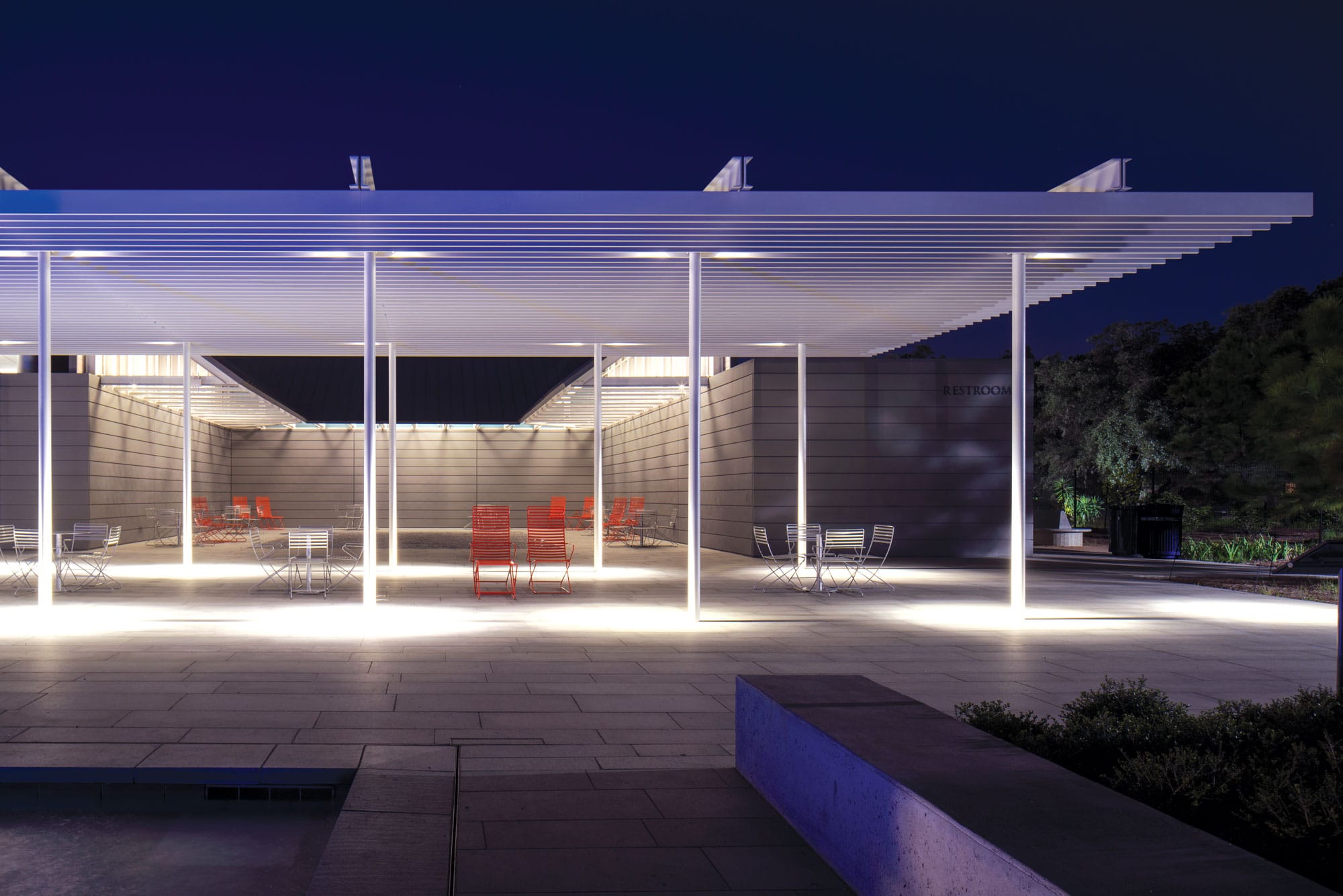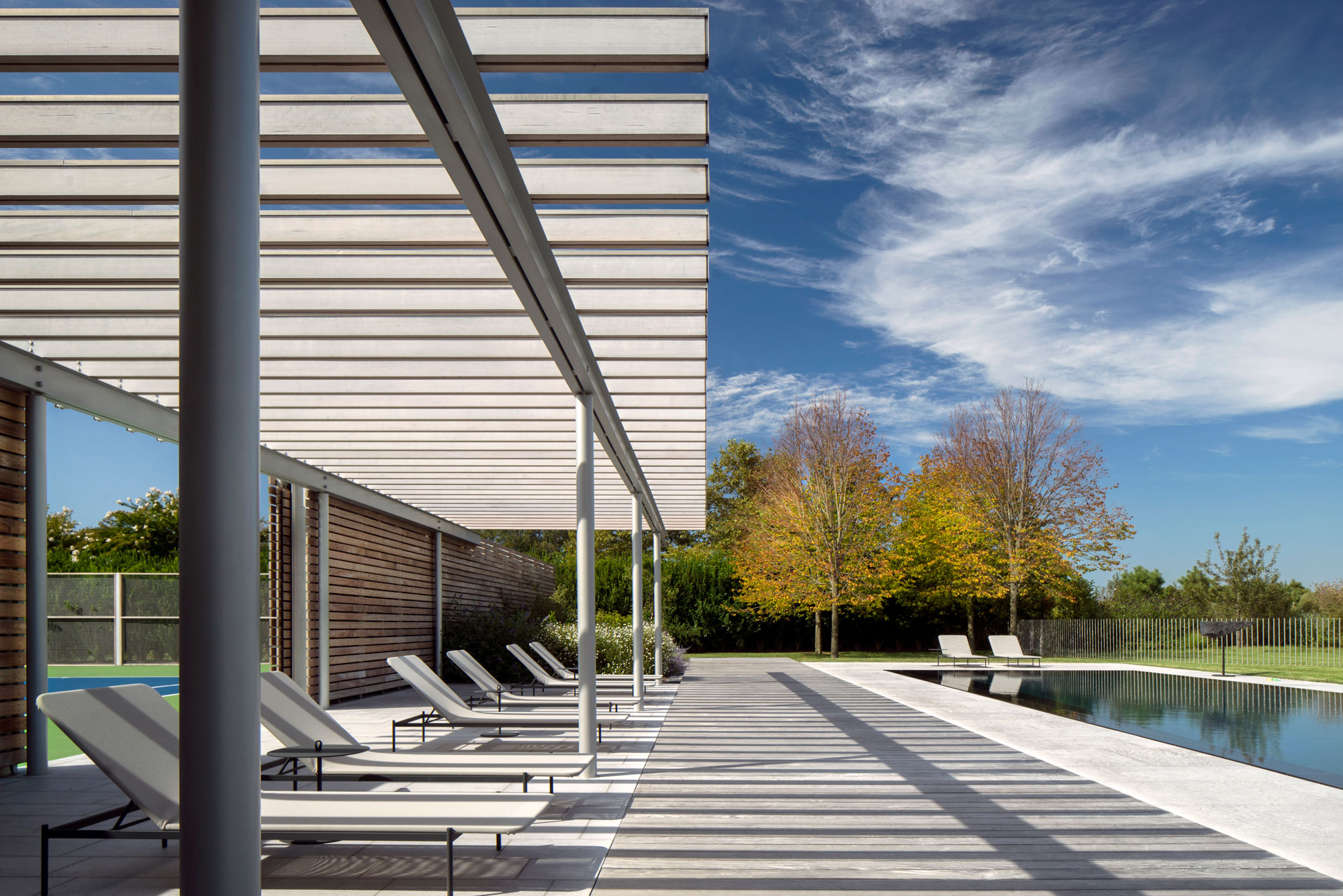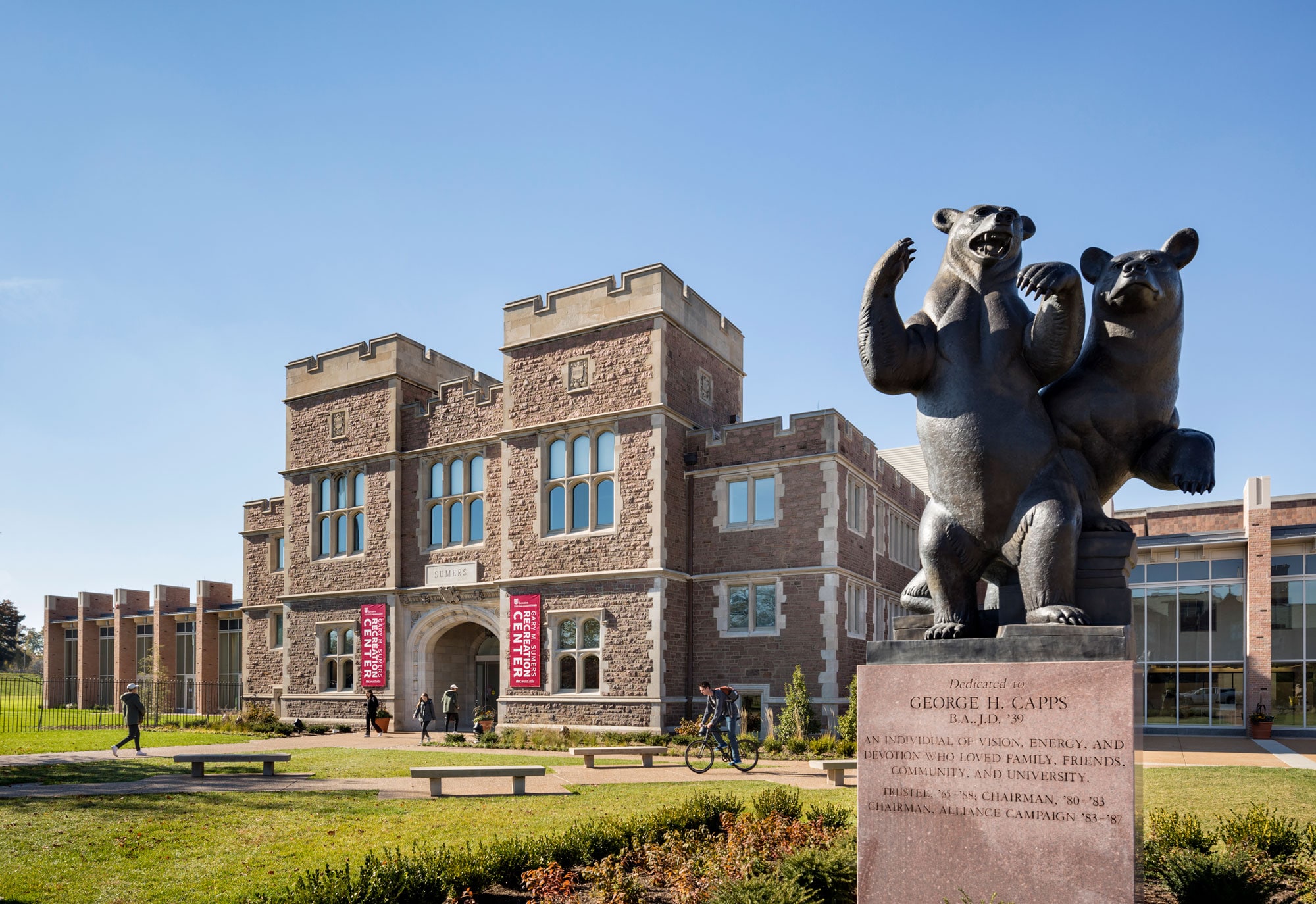
[Photo: Nic Lehoux]
For sustainable buildings that will go on to inspire for generations to come, architects look to steel
 Download a PDF of this story.
Download a PDF of this story.
To learn more, visit Steel Market Development Institute
Look out the window at any major skyline and you will see building upon building showcasing shining, towering examples of steel. Perhaps now more than ever, it’s easy to see, as it’s a predominant feature in everything from parks and museums to even private residences, with exposed beams or inspiring frames that, at times, seem to defy gravity.
Architecturally exposed structural steel has been gaining popularity in recent years, according to experts like Mark Thimons, vice president of sustainability for the Steel Market Development Institute (SMDI). When Thimons travels, he often finds himself looking out the window or up at the sky at the structures that tower overhead. “If you look at some of the new steel buildings being built—structural steel or cold-formed steel—there are some really interesting things being done. It can be an exciting material to design with—you can do pretty much anything with it.”
In addition to aesthetics, properly designed steel structures provide long-term durability—and they’re resistant to corrosion, mold, vermin, and more. Steel doesn’t warp or crack, and it’s not harmed by moisture. In terms of design, the options for steel are almost limitless. In a world where seemingly few things are made to last, steel endures, and there are countless reasons why today’s architects continue to turn to steel for their projects.

[Photo: Peter Aaron]
WHAT DO ARCHITECTS & EXPERTS SAY?
We talked to Tom Kirk, principal for Bohlin Cywinski Jackson, about some of the top reasons to design with steel. Many of the projects that the architects of Bohlin Cywinski Jackson work on utilize steel, and Kirk says they appreciate the material’s straightforwardness. “You can see what the building is doing and use it to organize and shape spaces.” But what are some other reasons to design with steel?
Steel lasts. Many Bohlin Cywinski Jackson clients love steel, and Kirk does, too. “A lot of our clients wish to build for perpetuity and we are not interested in suggesting materials that are not going to last,” he says. Steel is among the most reliable materials out there, and of course it can be recycled after its service life.
Yes, steel is 100% recyclable—meaning any steel product can be recycled into any other steel product, like a car door or refrigerator, for instance. All new steel has some recycled content already. Structural steel is recycled at about 98%, and anywhere from 60 to 80 million tons of steel scrap are recycled every year into new North American products.

[Photo: Nic Lehoux]
Steel lets you problem solve in creative ways.
Take, for instance, a fieldhouse project Bohlin Cywinski Jackson completed for the Germantown Friends School in Philadelphia, where the entire steel framing system is exposed to view. Using steel, something as simple as a sunshade can be transformed (pg. 34). Bohlin Cywinski Jackson attached exterior shades built of small carbon steel and stainless steel angles, supporting diffuse translucent panels to a standard manufactured curtain wall system, a remarkable feat in and of itself on this modest project for a Quaker institution interested in sustainability.
“To us it was really important that we not just resort to roller shades that would not survive in a gymnasium environment,” Kirk says. It was also an opportunity to ask, “How do you let in daylight but shield the glare that is detrimental to a teaching environment?” Kirk says steel lets you do all that and more, as it also tells a story—where is the sun, and what is your orientation within this environment? Why are these repetitive frames set to that specific angle?
Retrofit and redesign are easy with steel.
How do you work with older masonry buildings that tend to be more opaque, highlighting their beauty while still achieving something new and exciting? Use steel.
The Gary M. Sumers Recreation Center at Washington University (pg. 34) in St. Louis, once the venue for the 1904 Olympic games, reimagines the university’s historic Francis Gymnasium and adds 66,000 square feet to create a new gateway to a comprehensive recreation and sports complex. Bohlin Cywinski Jackson kept the front of the building and inserted a series of steel frames to hold up the remainder of the structure, removing the maze of split-level floors that no longer functioned in the old building, allowing for a new, three-story fitness, recreation, and athletics program to lock into the old structure. The move saved money and resulted in the most dramatic space in the project. “You move from the pedestrian walkway outside, through the old building facade, across this steel bridge into this three-story volume of space supported by the new steel frames,” Kirk says. “Crossing over the entry bridge and bracing the steel frames is a large king post truss that draws your eye upward to a skylit roof supported by Pratt style steel trusses, a nod to those that once held up the Francis Gymnasium roof.”

[Photo: Nic Lehoux]

[Photo: Nic Lehoux]
Steel invites you to get detailed.
It’s always a pleasure to work with exposed structural steel elements and find ways to create lightness and delicacy with detailing you can only achieve with steel. “It’s pretty amazing in terms of shaping steel, shaping the membranes, shaping the connections,” Kirk says. You can even get really granular, asking questions about welds or bolting. This is where the architects can have all kinds of fun working with the client and the structural engineer on a journey to make a truly great building.

[Photo: Peter Aaron]
Steel can be both grand and graceful.
“There’s just something tactile, something to the scale of working with steel that is appealing,” Kirk says. “There is always the desire to achieve that emotional resonance within architecture, and materials play a big role.”
In the U.S., there’s a rich history of architects using steel. “In Chicago in the early 20th century you had architects using steel to free up building facades, and then steel starts to move from behind the curtain, quite literally, and becomes a defining element in buildings, including the actual facades,” Kirk says. “Spinning out of that is this idea that you can really do these exemplary things with steel and you can make spaces that are graceful and open.” Just look at the heroic canopies, overlooks, and cantilevers that exist in so many cities’ best skylines. “When done right, it looks light and airy and unforced,” Kirk says.

[Photo: Peter Aaron]
Steel is efficient.
The overall efficiency of steel—both in design and environmental footprint—is another big win for architects. “For mid-rise buildings such as hotels, apartment complexes, and hospitals, cold-formed steel is often used. Many of these steel assemblies are fabricated offsite with little variation, translating to less onsite labor, assembly time, and overall cost in addition to a lot less waste,” Thimons says. “Steel’s high strength-to-weight ratio means using less material to accomplish the project goals when compared to competing materials, and smaller profile structures allow for longer spans and wider bay areas, which are less intrusive on the usable space of a building.”
Steel’s efficiency doesn’t end with the completion of a building. Thinking more long-term, steel framing offers adaptability and is much easier than other materials to update as occupancy needs evolve over the course of the building’s life.
